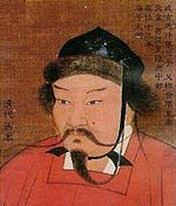Introduction
Mongol Empire’s on Central Asia, founded by Genghis Khan in the early 13th century, was one of the largest and most influential empires in history. While its conquests stretched from China to Eastern Europe, Central Asia felt the Mongols’ impact more profoundly than most regions. The Mongols reshaped the region’s political landscape, economy, culture, and demographics. But was their rule a blessing or a curse? Let’s explore how the Mongol Empire left an indelible mark on Central Asia.
The Mongol Conquest of Central Asia
The Rise of Genghis Khan
Before the Mongols established dominance over Central Asia, the region was fragmented among various Turkic and Persianate states, including the Khwarezmian Empire. Genghis Khan’s unification of the Mongol tribes in 1206 set the stage for an unprecedented military campaign that would transform Central Asia forever.
The Fall of the Khwarezmian Empire
One of the most significant turning points was the Mongols’ war against the Khwarezmian Empire (1219–1221). After a diplomatic dispute led to the massacre of Mongol traders, Genghis Khan retaliated with brutal efficiency, decimating cities like Bukhara, Samarkand, and Urgench. The devastation was so immense that some cities took centuries to recover.
Political Changes Under Mongol Rule
A New Administrative System
The Mongols implemented a structured administrative system in Central Asia, influenced by Chinese and Persian bureaucratic traditions. They divided their empire into regions governed by appointed officials, ensuring efficient tax collection and law enforcement.
Integrating IoT with Blockchain for Supply Chain Transparency
The Role of the Chagatai Khanate

After Genghis Khan’s death, Central Asia became part of the Chagatai Khanate, ruled by his descendants. Although initially strong, internal conflicts and cultural influences from settled societies gradually weakened Mongol rule.
Economic Transformations
Revival of the Silk Road
Despite the initial destruction, Mongol rule eventually stabilized trade routes across Central Asia, particularly the Silk Road. The Mongols’ commitment to trade security allowed merchants to travel freely, boosting economic interactions between East and West.
Impact on Agriculture and Livestock
The Mongols were nomadic, and their rule prioritized pastoralism over settled agriculture. While some areas thrived under their control, others suffered from neglect and destruction of irrigation systems, leading to economic decline in previously prosperous agricultural zones.
Cultural and Social Influence
Religious Tolerance and Diversity
Unlike many conquerors, the Mongols practiced religious tolerance. They patronized Islam, Buddhism, Christianity, and various other faiths, allowing Central Asia to remain a melting pot of cultures and ideas.
Mongolization and Persianization
Over time, Mongol rulers in Central Asia adopted many Persian and Turkic customs, intermarried with local populations, and converted to Islam. This cultural assimilation shaped the region’s future identity, blending Mongol traditions with Persianate governance and Islamic practices.
The Impact on Science and Learning
Mongol Patronage of Scholars
The Mongols valued knowledge and actively supported scholars. They encouraged the exchange of ideas across their empire, leading to a flourishing intellectual environment in cities like Samarkand and Bukhara.
Destruction and Reconstruction of Knowledge Centers
While Mongol invasions initially destroyed many libraries and institutions, later rulers, such as Timur (Tamerlane), revitalized learning by rebuilding educational centers and sponsoring scholars.
The Decline of Mongol Influence in Central Asia
Internal Struggles and Fragmentation
As Mongol rulers fought among themselves, the Chagatai Khanate fractured, leading to the rise of new political entities, such as the Timurid Empire and various Turkic-Mongol states.
The Spread of Islam and the End of Mongol Paganism
Over time, Mongol elites in Central Asia fully embraced Islam, marking the end of traditional Mongol shamanistic beliefs in the region. This religious shift further integrated the Mongols into the broader Islamic world.
Conclusion
The Mongol Empire’s impact on Central Asia was profound and multifaceted. While their initial conquests brought devastation, they also ushered in a period of political reorganization, economic revitalization, and cultural exchange. The Mongols left a lasting legacy, shaping the trajectory of Central Asian history in ways still felt today.
FAQs
1. How did the Mongols affect trade in Central Asia?
The Mongols revitalized trade along the Silk Road by ensuring security and stability, allowing merchants to travel safely and boosting economic interactions between East and West.
2. Did the Mongols destroy or develop Central Asia?
Initially, the Mongols caused significant destruction, but over time, they contributed to trade, cultural exchange, and governance improvements, balancing their impact.
3. What was the Chagatai Khanate’s role in Central Asia?
The Chagatai Khanate, one of the Mongol Empire’s successor states, ruled Central Asia, maintaining Mongol traditions while integrating local Persian and Turkic influences.
4. Did the Mongols convert to Islam in Central Asia?
Yes, over time, many Mongol rulers in Central Asia converted to Islam, blending Mongol and Islamic traditions and further shaping the region’s identity.
5. What happened to Central Asia after Mongol rule ended?
After Mongol rule declined, new powers like the Timurid Empire emerged, continuing to shape Central Asia’s political, cultural, and economic landscape.


